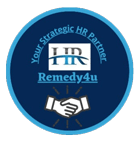Training and Development - A Key HR Function
Training and development is one of the key HR functions. Most organisations look at training and development as an integral part of the human resource development activity. The turn of the century has seen increased focus on the same in organisations globally. Many organisations have mandated training hours per year for employees keeping in consideration the fact that technology is deskilling the employees at a very fast rate.
So what is training and development then? Is it really that important to organisational survival or they can survive without the former? Are training and development one and the same thing or are they different? Training may be described as an endeavour aimed to improve or develop additional competency or skills in an employee on the job one currently holds in order to increase the performance or productivity.
Technically training involves change in attitude, skills or knowledge of a person with the resultant improvement in the behaviour. For training to be effective it has to be a planned activity conducted after a thorough need analysis and target at certain competencies, most important it is to be conducted in a learning atmosphere.
While designing the training program it has to be kept in mind that both the individual goals and organisational goals are kept in mind. Although it may not be entirely possible to ensure a sync, but competencies are chosen in a way that a win-win is created for the employee and the organisation.
Typically organisations prepare their training calendars at the beginning of the financial year where training needs are identified for the employees. This need identification called as ‘training need analysis’ is a part of the performance appraisal process. After need analysis the number of training hours, along with the training intervention are decided and the same is spread strategically over the next year.
Development
Lots of time training is confused with development, both are different in certain respects yet components of the same system. Development implies opportunities created to help employees grow. It is more of long term or futuristic in nature as opposed to training, which focus on the current job. It also is not limited to the job avenues in the current organisation but may focus on other development aspects also.
At Goodyear, for example, employees are expected to mandatorily attend training program on presentation skills however they are also free to choose a course on ‘perspectives in leadership through literature’. Whereas the presentation skills program helps them on job, the literature based program may or may not help them directly. Similarly many organisations choose certain employees preferentially for programs to develop them for future positions.
This is done on the basis of existing attitude, skills and abilities, knowledge and performance of the employee. Most of the leadership programs tend to be of this nature with a vision of creating and nurturing leaders for tomorrow. The major difference between training and development therefore is that while training focuses often on the current employee needs or competency gaps, development concerns itself with preparing people for future assignments and responsibilities.
